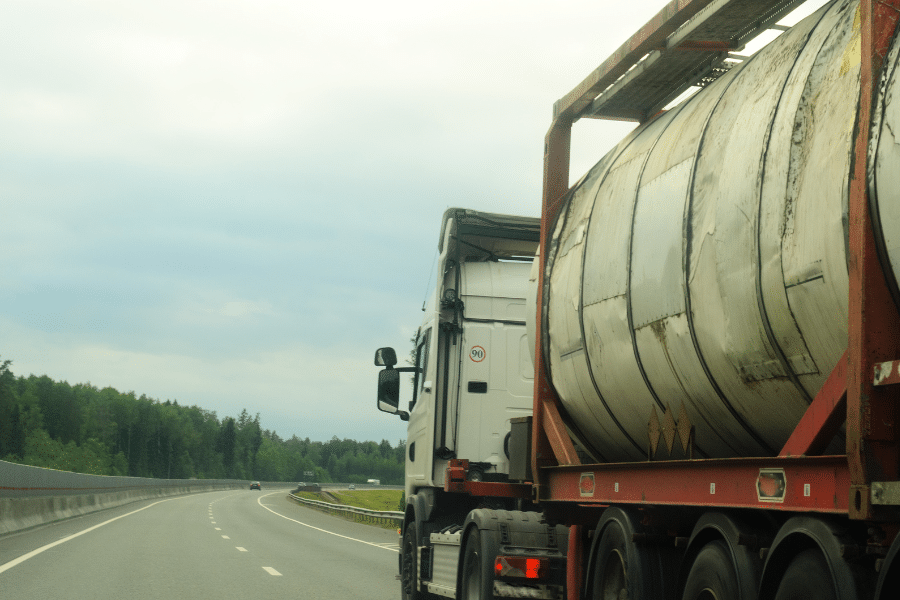Hazmat carriers can safely deliver their load by exercising prudence, comprehending the nature of the materials, and utilizing fleet management instruments. In this article, we will thoroughly discuss every aspect of hazmat trucking.
What Is Hazmat Trucking?
Hazmat trucking is a branch of professional truck driving, that involves the transportation of hazardous materials. The conveyance of these materials requires a heightened sense of caution which can be reflected in multiple safety aspects such as specialized qualifications for drivers, appropriate hazardous materials signage, choosing the best route, cargo movement, delivery, or disposal. Therefore, transporting hazardous materials may be a time-sensitive practice. Due to the nature of hazmat trucking, it requires highly trained and experienced drivers.
What Type of Cargo Is Considered a Hazmat Freight?
One of the primary takeaways for Hazmat freight is that this sort of cargo does not fall under one monolithic category. In reality, there are a variety of different classes of Hazmat freight, each with its own subdivisions, resulting in an extensive catalog of hazardous materials that a driver might transport.
These are the major classes of Hazmat freight:
- Class 1 – Explosive materials
- Class 2 – Gases: non-flammable, flammable, and toxic
- Class 3 – Flammable and combustible liquids
- Class 4 – Flammable solids, combustible, and dangerous when wet materials
- Class 5 – Oxidizers and organic peroxides
- Class 6 – Toxic materials and infectious substances
- Class 7 – Radioactive materials
- Class 8 – Corrosive materials
- Class 9 – Miscellaneous dangerous goods
While a driver doesn’t need an encyclopedic knowledge of each class, the above rundown imparts a general sense of what a driver may be transporting and the degree of caution they need to take while operating the vehicle.
Hazmat Trucker Certification
While all truck drivers are required to obtain a commercial driver’s license (CDL) to operate semi-trucks, drivers who handle hazardous materials need additional certification. Specifically, hazmat drivers must earn a hazmat endorsement, or code H, before they can transport these substances. To acquire this certification, drivers must submit an application and successfully pass an exam.
Certain trucking companies may cover the expenses associated with obtaining hazmat certification, as there is often a high demand for drivers with such credentials. In addition to a hazmat endorsement, some hazmat drivers opt to earn a code N tanker endorsement, as hazardous materials are frequently transported in tankers. Others may pursue a code X endorsement that combines both the hazmat and tanker certifications into a single test.
What’s a hazmat safety permit?
A hazardous materials safety permit (HMSP) is the necessary documentation proving that the driver is capable of handling hazmat loads. Obtaining an HMSP is mandatory for drivers transporting hazardous substances. To acquire this permit, truck drivers must apply to the Federal Motor Carrier Association (FMCSA) and fill out the necessary documentation, which is accessible through the Department of Transportation (DOT). It’s essential to note that drivers must hold a hazmat certification in addition to the HMSP, as both documents are required by the DOT.
Hazardous Materials Signage
The use of hazardous signs dates back to the 1800s when they were used to indicate poison. Since then, more hazardous materials have been identified, and labeling them has become crucial in preventing harm to the public. To streamline the labeling process, OSHA has aligned its Hazard Communication Standard with the GHS, a system developed by the United Nations to identify hazardous chemicals. The symbols used in this system include:
Health Hazard
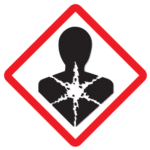
When you come across this symbol on a product or material, it indicates that direct exposure to the chemical substance could lead to acute or chronic health issues. This may include toxins that can impair respiratory function or substances that are linked to causing cancer.
Flame
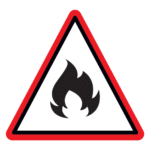
The flame symbol signifies that a substance may pose a fire hazard. It could be that the substance is flammable or emits flammable gas. This also includes materials that may spontaneously ignite upon exposure to air or water, as well as other types of fire risks.
Exclamation Mark

The exclamation point symbolizes urgency, and it’s used to label substances that could cause immediate harm to a person upon contact. This may range from mild irritation of the skin or eyes to severe toxicity that could potentially be fatal.
Corrosion
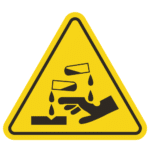
The pictogram symbolizing corrosion shows a substance being poured onto a person’s hand or on a metal pipe. Regardless of the case, liquid carves out a hole, suggesting that corrosive substances can seriously burn skin and even damage metal.
Gas Cylinder

This hazmat sign symbolizes a gas cylinder under pressure. A gas is considered as pressurized if it has a pressure of at least 29 pounds per square inch. Always be cautious around pressurized gas cylinders since a small puncture or a leak could cause a devastating explosion or negatively impact one’s health.
Exploding Bomb
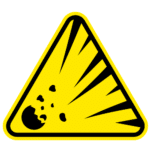
Materials with explosive properties are identified with an image resembling a detonating bomb. These substances include highly unstable compounds that are capable of spontaneous combustion, meaning that they are susceptible to detonating without external stimulus. These materials are considered extremely dangerous.
Environment
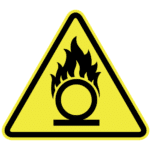
Among the nine official hazardous materials signs that have been established under the Hazard Communication Standard/GHS, this is the only one that is optional, which means that it may not always be present on every chemical that poses a potential hazard to aquatic creatures.
Burning Circle
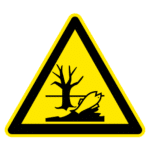
Chemical compounds that discharge oxygen during a reaction with another material are known as oxidizers. These chemicals act as combustion accelerants, causing fires to burn with greater intensity and for a longer duration. This sign symbolizes that the material should be handled carefully, as it could start a fire.
Skull and Crossbones
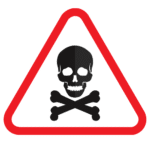
The skull and crossbones is a widely recognized symbol that most people closely associate with the notion of toxicity or poison. This sign is used to indicate that the substance in question is hazardous, specifically toxic in nature. In other words, if an individual were to ingest, inhale or come into contact with even a small quantity of this chemical, it could result in fatal consequences.
The Bottom Line
Hazmat trucking is a specialized form of truck driving, since the loads are potentially hazardous to the environment, people, and animals, extreme caution is necessary to safely execute this method of transportation. Hazmat truckers must be highly trained and experienced, and they need to obtain hazmat endorsements and hazardous materials safety permits. There are various types of hazmat freight, each with its own classification and signage, which is a critical aspect in assuring that the materials will be transported safely and efficiently.

